7th August, 1906. Parsee Bagan ground, Calcutta. For the first time ever, a flag was unfurled in public that was specifically designed to represent India – as an independent entity. Two young Bengali men were the ones who designed the flag. This is the inspiring yet forgotten tale of one of them: Hemchandra Kanungo.
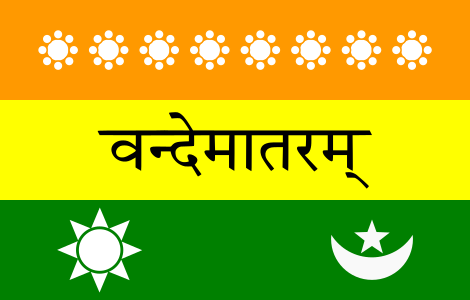
The “Calcutta” flag, believed to be the 1st Indian flag
Born in 1871 in Midnapore, Hemchandra did his schooling from Midnapore before he joined Sealdah Medical School (present day NRS Medical College). However, after 3 years, he dropped out and joined the government art college. But here also, he dropped out after just 6 months. A restless man, Hemchandra moved from job to job – teaching at Midnapore Collegiate School, working as a lab instructor even joining government service for a while.
By the turn of the century, a sense of nationalistic pride was spreading across Bengal. In 1905, Viceroy Lord Curzon announced the division of Bengal Presidency on religious lines between east and west. Like many other Bengali young men and women, this also sparked a major change in Hemchandra’s life. He decided to dedicate himself to the cause of his motherland.
By this time, a number of organizations had sprung up in Calcutta that aimed to promote nationalistic spirit among the youth. Leading among them was Anushilan Samity. Hemchandra joined Anushilan Samity and would go on to play a pivotal role in that organization shaping up to be the leading anti-British nationalistic force in Bengal in coming years. It was during this time that he and Sachindra Prasad Bose designed and unfurled the “first” Indian flag. By this time, Anushilan Samity was actively planning on carrying out armed strikes against the British establishment. However, technical knowhow was one aspect where they were severely lacking. Hemchandra decided to change that.
In late 1906, Hemchandra travelled to Europe to learn the art of bomb making. To finance his plans, he sold off his ancestral property. It is believed that he possibly was the first Indian to travel abroad with the avowed objective of learning to make bombs.
He arrived in Marseille towards the end of 1906. In the coming months, Hemchandra travelled all over France, Switzerland and England, trying to establish contacts with revolutionary forces. Finally, he found a backer in Paris who financed Hemchandra’s studies of Chemistry. In July 1907, Hemchandra was introduced to Albert Libertad – the French anarchist and writer. Through Libertad, Hemchandra and Pandurang Bapat, another Indian revolutionary, were admitted into a group of Russian revolutionaries.
Under the guidance of the Russians, Hemchandra studied history, geography, economics, socialism, communism, and most importantly – explosive chemistry and revolutionary organization. Once he had acquired enough knowledge of the subject, Hemchandra sailed back to India – his most prized possession being a 70-page manual of making bombs and explosives.
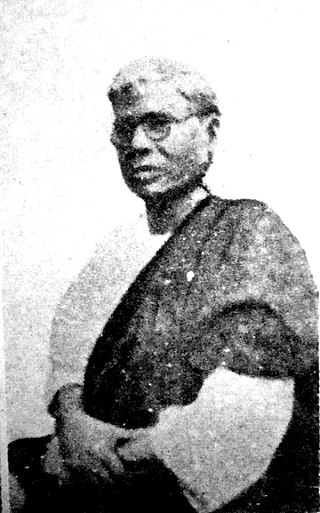
Hemchandra Kanungo
After returning to Calcutta, Hemchandra set up a bomb making in facility at Manicktala in north Calcutta. He also came in close contact with Aurobindo Ghosh (later Sri Aurobindo) – a leading light of the revolutionary movement of Bengal. Aurobindo convinced Hemchandra to join forces with the former’s younger brother Barin Ghosh.
Plans had been already afoot for assassinating some of the top British officials of the province to send a message to the ruler. The addition of Hemchandra’s skill infused a new zeal into the efforts of the revolutionaries. The target chosen was Douglas Kingsford, the Chief Magistrate of the Presidency Court of Alipore – infamous for meting out harsh statements to the arrested revolutionaries. Kingsford brought further ire on himself when he ordered Sushil Sen, a minor boy, to be mercilessly whipped because he had taken part in agitation during trial of arrested revolutionaries.
Hemchandra constructed a bomb intended to take out Kingsford. An empty cocoa tin was packed with picric acid and three detonators. The tin was then placed inside the hollowed out part of Herbert Broom's Commentaries on the Common Law. The book was parceled to Kingsford. Unfortunately, he placed the unopened parcel in his book shelf without opening it, thus getting spared. Soon, Kingsford was transferred to Muzaffarpur in Bihar by the administration which had realized he had made Calcutta too hot for himself.
However, Barin Ghosh and his ilk were undeterred. They decided to assassinate Kingsford while he was on the road. Hemchandra made a new bomb* – composed of 6 pounds of dynamite, a detonator and black powder fuse – for the purpose. Two young revolutionaries – Prafulla Chaki and Khudiram Bose – lay in wait for Kingsford to emerge from the Town Club after his daily round of evening bridge. Unfortunately, the pair ended of bombing, and killing the wife and daughter of an English barrister instead of Kingsford as both parties were traveling in identical horse drawn carriages. Bose was arrested and hung to death, Chaki committed suicide to evade arrest.
The news of the bombing sent the Bengal administration into a tizzy. Raids were conducted in suspected revolutionary hideouts. Soon, the main leaders like Aurobindo & Barin Ghosh, Hemchandra and Satyendranath Bosu were all arrested. The arrested were charged with waging war against the Government of the British Raj. In all, 40 were charged in a case titled “The Empire vs. Aurobindo Ghosh and others”, which became more famous as the Alipore bomb case (since the trials were held in the Alipore court). The assassination attempt on Kingsford was linked to previous attempts to bomb and kill Lt. Governor of Bengal – Andrew Fraser. A lengthy trial followed.
The hearings began on 19th October, 1908 and the final verdict was given on 6th May, 1909. The lead defense counsel was a junior lawyer of the name Chittaranjan Das, who in time would gain fame as “Deshbandhu” Chittaranjan and become the face of the independence movement in Bengal. Hemchandra was among 13 who were sentenced to deportation for life. He was transported to the dreaded prisons of Andaman across the Bay of Bengal.
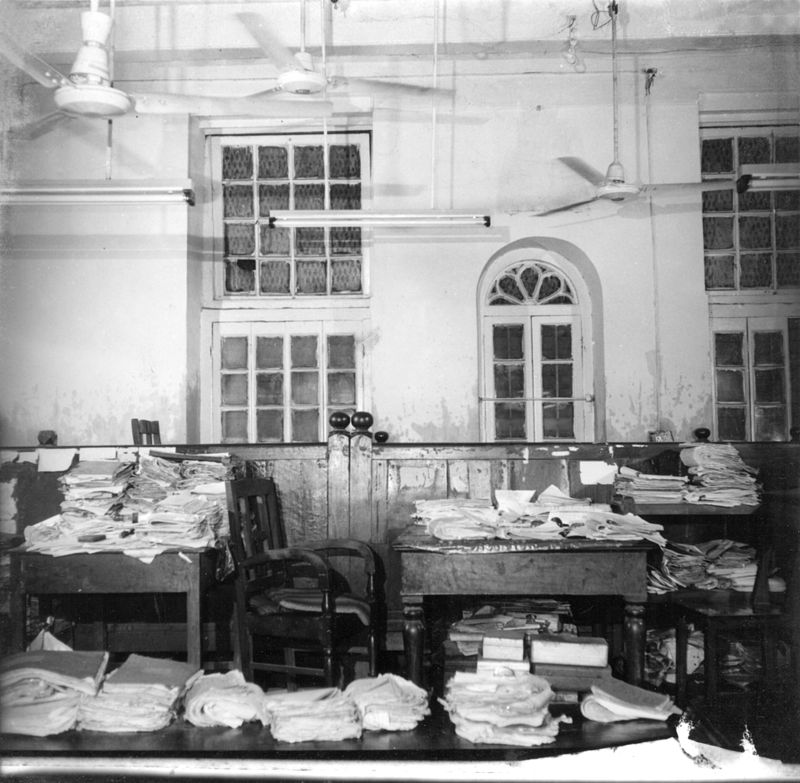
The trial room at Alipore Sessions Court
The terribly inhumane conditions of the prison broke his health and Hemchandra was released in 1921. He returned to his native village in Midnapore district and spent the last years of his life in anonymity. Hemchandra passed away in 1951.
During his European sojourn, Hemchandra had met Madame Bhikaji Cama. The flag that Madame Cama hoisted at the International Socialist Conference in Stuttgart, Germany on 22 August, 1907 was based on the earlier design by Hemchandra and Sachindra Bose.
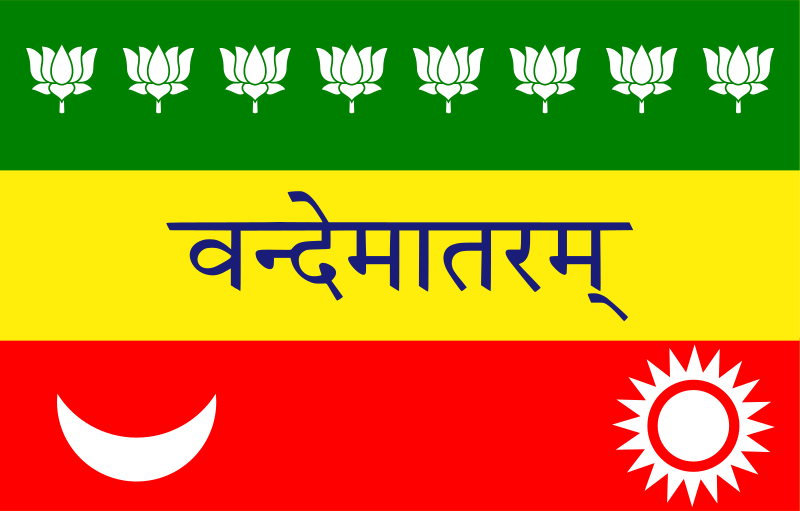
The flag hoisted by Bhikaji Cama
Hemchandra’s life was spent in battling for the nation’s sovereignty and then behind bars in miserable and inhumane conditions. However, this gallant man’s tale is lost today in the annals of history.
* According to another version of events, the bomb used in the Kingsford bombing was made by Ullaskar Dutta. Dutta and Barin Ghosh were awarded death sentence in the trial which was later reduced to life imprisonment.
Sources: click here
Images: Wikimedia Commons
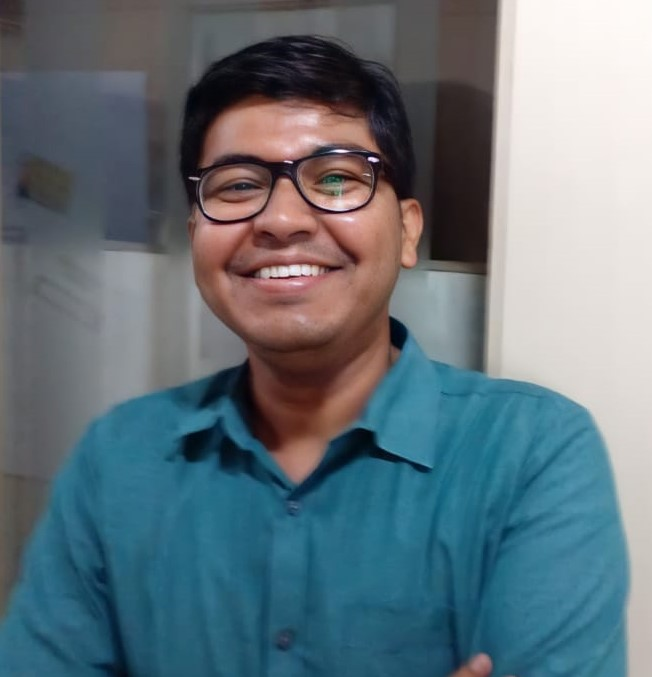 Based out of Kolkata, Trinanjan is a market researcher by profession with a keen interest in Indian history. Of particular interest to him is the history of Kolkata and the Bengal region. He loves to write about his passion on his blog and also on social media handles.
Based out of Kolkata, Trinanjan is a market researcher by profession with a keen interest in Indian history. Of particular interest to him is the history of Kolkata and the Bengal region. He loves to write about his passion on his blog and also on social media handles.
NEXT ARTICLE

At the southernmost tip of this mesmerising ensemble lies the majestic Great Nicobar Island, boasting an impressive landmass of about 910 square kilom...

Bharath has always been a land traversed by spiritual masters/ Guru since time immemorial. These spiritual masters have always upheld the core princip...

South India contains its fair share of unique pilgrimage centres. These divine places of worship have a prominent Sthala Purana, devoted followers, di...